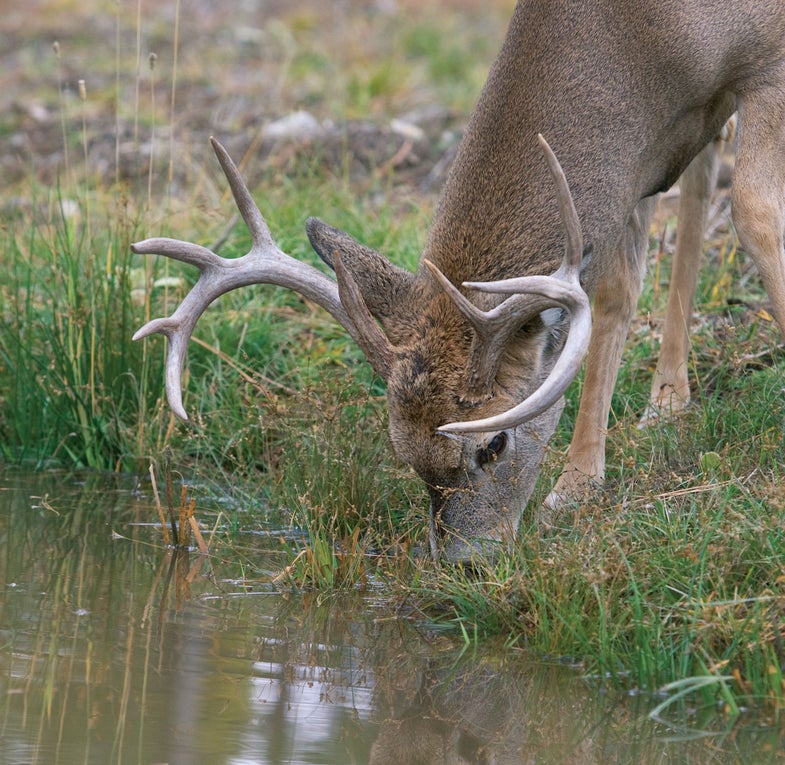Instant Water Hole: Make a Place for a Buck to Drink—and Stick Around
Photograph by Donald M. Jones Deer need water daily. If they don’t find it where you hunt, they’ll leave to...

Photograph by Donald M. Jones
Deer need water daily. If they don’t find it where you hunt, they’ll leave to get it. Smart hunters know this and put in water sources to draw and keep bucks on their land. But digging holes in hard, dry ground can be nearly impossible unless you own expensive backhoe equipment or a bulldozer (and how many of us do?).
I’ve discovered an easy shortcut to making water holes on my land, though. It takes very little work, and often you also end up with a prime bedding and loafing area for bucks. The trick is to watch the weather.
When strong windstorms blow through, I walk my land to check for damage. Often, several large ash, oak, pine, or hickory trees have been uprooted. The trees provide firewood, but sometimes they also do the heavy lifting toward forming a water hole.
The root structures of large trees can stretch 6 to 10 feet across and rip a hole 1 to 3 feet deep, often reaching down to a clay soil level. This is the start of your hole.
With a pickax and shovel, clean out the depression so it has a smooth rounded bottom. If the soil is clay and the hole retains water naturally, that’s enough. If it’s sandy or porous, line it with plastic pond-liner material. Weight the overlapping sides with rocks and dirt. Your water hole is finished.
As a bonus, the large fallen tree provides superb cover. With water and the tree to hunker against, a buck might make this a bedding spot. If other cover and forage is scarce, add a few native shrubs. With a little help from nature, you’ve just created an oasis for a reclusive old buck.